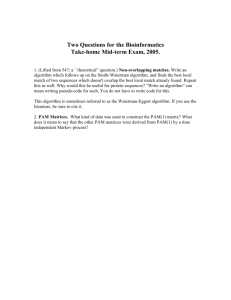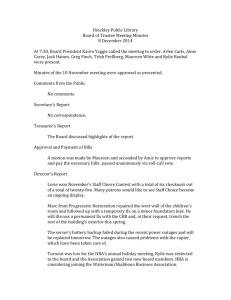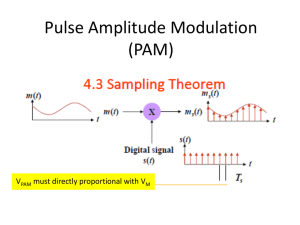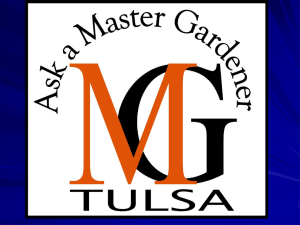PRACTICE TEST QUESTIONS AND ANSWERS: ELEMENTARY
advertisement
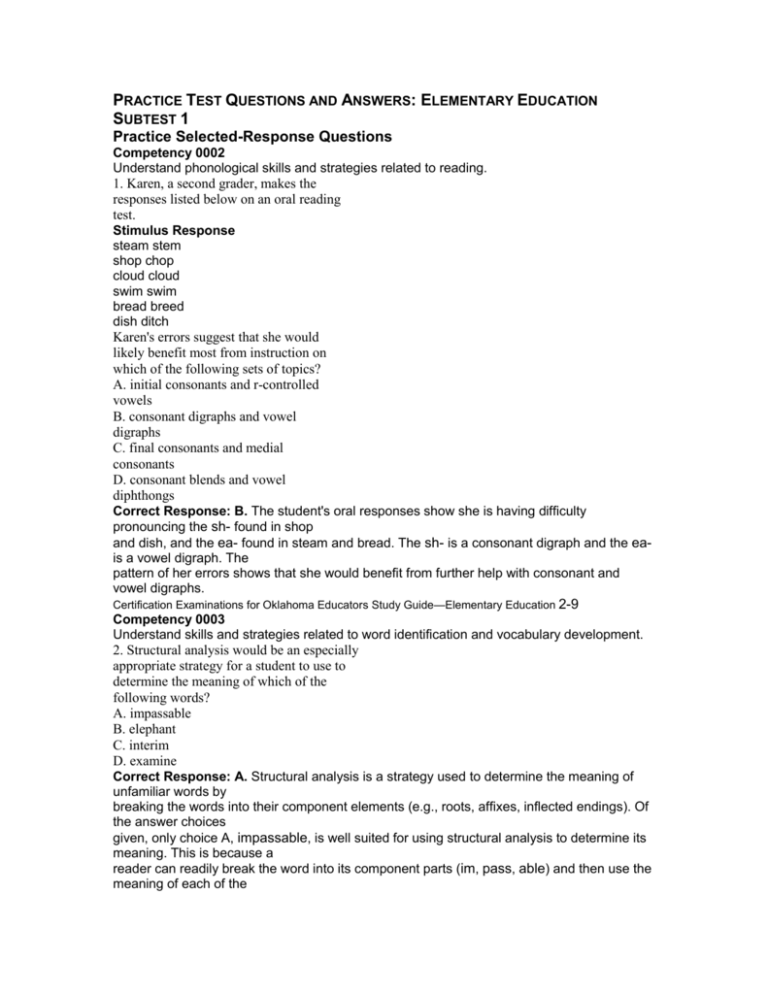
PRACTICE TEST QUESTIONS AND ANSWERS: ELEMENTARY EDUCATION SUBTEST 1 Practice Selected-Response Questions Competency 0002 Understand phonological skills and strategies related to reading. 1. Karen, a second grader, makes the responses listed below on an oral reading test. Stimulus Response steam stem shop chop cloud cloud swim swim bread breed dish ditch Karen's errors suggest that she would likely benefit most from instruction on which of the following sets of topics? A. initial consonants and r-controlled vowels B. consonant digraphs and vowel digraphs C. final consonants and medial consonants D. consonant blends and vowel diphthongs Correct Response: B. The student's oral responses show she is having difficulty pronouncing the sh- found in shop and dish, and the ea- found in steam and bread. The sh- is a consonant digraph and the eais a vowel digraph. The pattern of her errors shows that she would benefit from further help with consonant and vowel digraphs. Certification Examinations for Oklahoma Educators Study Guide—Elementary Education 2-9 Competency 0003 Understand skills and strategies related to word identification and vocabulary development. 2. Structural analysis would be an especially appropriate strategy for a student to use to determine the meaning of which of the following words? A. impassable B. elephant C. interim D. examine Correct Response: A. Structural analysis is a strategy used to determine the meaning of unfamiliar words by breaking the words into their component elements (e.g., roots, affixes, inflected endings). Of the answer choices given, only choice A, impassable, is well suited for using structural analysis to determine its meaning. This is because a reader can readily break the word into its component parts (im, pass, able) and then use the meaning of each of the parts to define the word. 2-10 Certification Examinations for Oklahoma Educators Study Guide—Elementary Education Use the passage below to answer the two questions that follow. 1The sled dogs were bearing the brunt of the burden, but they were rewarded for their efforts with a fine feast each evening. 2And, as the journey across the tundra progressed, the packs on their sleds grew lighter. 3In the evenings the dogs lay next to one another in a furry mass to keep warm. 4Sometimes they joined in the howling of the wolf packs encircling the camp in the distance, making the humans extremely edgy. 5The wolves seemed fearful of the campfires. 6In the mornings, the dogs will have scrambled to their feet and shook themselves off, sometimes creating momentary rainbow bursts as the early morning rays of sun filtered through the spraying snow and ice droplets. Competency 0008 Analyze written work in relation to its stated purpose; evaluate areas in need of improvement; and revise written texts for style, clarity, and organization. 3. Which of the following revisions would best improve the overall unity of this text? A. Delete the second half of Sentence 1. B. Switch the order of Sentences 2 and 3. C. Delete Sentence 5. D. Move Sentence 6 to the beginning of the text. Correct Response: C. Sentence 5 does not pertain to the main idea of the narrative, which describes a group of sled dogs on a journey. The sentence interrupts the development of the narrative and should thus be deleted. Certification Examinations for Oklahoma Educators Study Guide—Elementary Education 2-11 Competency 0009 Apply knowledge of English grammar and mechanics in revising texts. 4. Which of the following changes in verb form should be made to this passage? A. Sentence 1: Change "were rewarded" to "have been rewarded." B. Sentence 2: Change "grew" to "would grow." C. Sentence 4: Change "encircling" to "having encircled." D. Sentence 6: Change "will have scrambled" to "scrambled." Correct Response: D. In Sentence 6, "will have scrambled" communicates the idea that the dogs' actions will be happening at some time in the future. In fact, the actions described occurred in the past. 2-12 Certification Examinations for Oklahoma Educators Study Guide—Elementary Education Competency 0011 Understand skills and strategies involved in speaking for various purposes. 5. To best ensure the success of a persuasive speech, which of the following steps should be carried out before planning how to select, organize, and present supporting material? A. analyzing the knowledge, attitudes, and interests of the intended audience B. drafting an interesting introduction and conclusion for the speech C. determining which type of organizational pattern to use for the speech D. deciding how much time to devote to the presentation of visual aids Correct Response: A. A speaker is most likely to be successful in persuading an audience if the speaker has taken steps beforehand to understand the audience he or she is trying to persuade. Analyzing an audience's knowledge, attitudes, and interests before developing a persuasive speech enables a speaker to focus on information and issues that can be expected to be meaningful and important to the audience. Certification Examinations for Oklahoma Educators Study Guide—Elementary Education 2-13 Competency 0012 Understand major ideas, eras, themes, developments, and turning points in the history of Oklahoma, the United States, and the world; and analyze their significance from multiple perspectives. 6. Which of the following developments most directly influenced the shift from nomadic life to village living and occupational specialization among the Neolithic peoples of the Near East? A. the creation of religious belief systems B. the fashioning of tools from stone and wood C. the establishment of the family group as the basic social unit D. the cultivation of food-producing plants Correct Response: D. The cultivation of food-producing plants by Neolithic peoples created food surpluses that freed some population segments for work in specialized occupations. Because food crops require regular attention throughout much of the year, their increased production strongly influenced the shift from nomadic life to the development of permanent settlements with sedentary populations. 2-14 Certification Examinations for Oklahoma Educators Study Guide—Elementary Education Competency 0013 Understand geographic concepts and phenomena, and analyze the interrelationships of geography, society, and culture in the development of Oklahoma, the United States and the world. 7. During the late twentieth century, economic globalization stimulated industrial growth in many developing countries. Which of the following best describes a major change that accompanied economic development in these countries? A. Agricultural production declined. B. The income gap between rich and poor decreased. C. Average family size increased. D. The population density of urban areas increased. Correct Response: D. Most industrial growth in developing countries occurs in urban areas. This stimulates migration from rural areas to cities, which causes an increase in the population density of urban centers. Certification Examinations for Oklahoma Educators Study Guide—Elementary Education 2-15 Competency 0015 Understand economic and political principles, concepts, and systems; and relate this knowledge to historical and contemporary developments in Oklahoma, the United States, and the world. 8. Which of the following illustrate the operation of the system of checks and balances established by the U.S. Constitution? I. Congress rejects a territory's petition for statehood. II. The Supreme Court renders a decision in a case involving a conflict between two states. III. The president vetoes a congressional bill. IV. The House of Representatives impeaches a federal judge. A. I and II only B. II and IV only C. I and III only D. III and IV only Correct Response: D. The U.S. Constitution provides for checks and balances among the three branches of the federal government—the legislative, executive, and judicial. A presidential veto of a congressional bill is an example of the balance of power between the executive and legislative branches. The impeachment of a federal judge by the House of Representatives is an example of the balance of power between the legislative and judicial branches. 2-16 Certification Examinations for Oklahoma Educators Study Guide—Elementary Education Practice Constructed-Response Assignment: Elementary Education Subtest 1 9. Use the information below to complete the exercise that follows. A first-grade teacher is assessing Amie's reading comprehension of a story that she reads fluently and accurately by having Amie retell the story in her own words. The story is printed below. Pam is at school. She plays a new game. A girl tells her how to play the game. First, Pam has to run as fast as she can. She likes to run. When she runs fast, she can feel the wind on her face. Next, the girl says, "Red light!" Pam has to stop. She must stand very still. Then the girl says, "Green light!" Now, Pam can run again. She runs fast. Pam likes the new game. She wants to play it with her friend Rosa after school. After Amie reads the story, the teacher asks some questions. Printed below is a transcript of their conversation. Teacher: Can you tell me what you were reading about? Amie: It's a story about some girls. One girl is named Pam. She doesn't know how to cross the street. Teacher: How do you know that Pam needs to learn about crossing the street? Amie: Because she doesn't even know about red lights and green lights. How red is for stop and green is for go. I think she's a little kid. Teacher: What happens to Pam in this story? Amie: This other girl bosses her around. Pam wants to run in the wind. The other girl makes her stop. She yells, "Red light!" and then Pam stops. I think the other girl tells her about crossing the street when the cars stop. So, she learns about it. Teacher: What else do you think Pam will do? Amie: Maybe she'll tell the girl to stop bossing her around. Certification Examinations for Oklahoma Educators Study Guide—Elementary Education 2-17 Using your knowledge of reading comprehension, write a response in which you: • identify one reading comprehension need demonstrated by this student; • provide evidence of this need by citing two specific examples of the need from the student's response to the text; • describe two different instructional strategies or activities to help address the need you identified; and • explain why each of the strategies or activities you describe would be effective for this purpose. FOR YOUR REFERENCE ONLY—The constructed-response item is written to assess understanding in Subarea I, Reading, which consists of the competencies listed below. Understand the reading process. Understand phonological skills and strategies related to reading. Understand skills and strategies related to word identification and vocabulary development. Understand skills and strategies involved in reading comprehension. Understand reading instruction and study skills in the content areas. Understand characteristic features of children's literature and strategies to promote students' literary response and analysis. 2-18 Certification Examinations for Oklahoma Educators Study Guide—Elementary Education A Very Good Response to the Practice Constructed-Response Assignment Amie demonstrates difficulty with literal comprehension, which leads to her making incorrect inferences. An example of this can be seen in her response to the teacher's third question. Amie infers that Pam is being "bossed around" without comprehending that the girls are playing a game. A second example is Amie's statement that Pam "doesn't know how to cross the street." In both the first and the second examples, she has over-attended to certain phrases (such as "red light") and under-attended or bypassed the topic sentence and other relevant clues about playing a game. Since Amie read the story aloud "fluently and accurately," she may have been concentrating more on decoding than comprehension. Therefore, the first thing I would do is have Amie read the story silently. If, after silent reading, Amie's answers to literal questions were still weak, I would help her "reconstruct" the story by modeling self-questioning as a strategy, using two kinds of basic questions: 1) "W" questions, like Where is Pam? What is she doing? Who is she with? and 2) sequencing questions, such as What does Pam do first? . . . Next? At first I would ask the questions out loud and answer them myself, then I'd ask them of Amie. Finally, I'd encourage her to ask and answer her own questions. As a follow-up, I'd have Amie practice this self-questioning strategy with other passages. This strategy would be effective in improving Amie's literal comprehension because it models and reinforces a technique she can use to monitor her own literal understanding as she reads. A second instructional strategy should be employed to help Amie locate and attend to relevant sections of the text. As part of regular whole-group instruction, I would make sure Amie and her classmates had plenty of exposure to stories on large charts. We would read these together, and as a class we would practice locating words, phrases, or sentences in the text that help us answer questions about the passage. For example, after sufficient teacher modeling of this process, students can be asked to "come up to the story chart with a marker and highlight (or underline) the words in the story that tell us where Pam is." Amie would also practice in a small group or individually with the teacher, using stories that have been typed or photocopied. Amie would be given a marker and asked to locate and highlight phrases in the story that answer my questions or questions asked by members of the group. As Amie shows increasing ability to highlight the passages that substantiate her answers, she can begin to respond verbally by reading those phrases aloud. Amie could also be asked to highlight all phrases or sentences in a story that she considers to be important. (continued) Certification Examinations for Oklahoma Educators Study Guide—Elementary Education 2-19 A Very Good Response to the Practice Constructed-Response Assignment (continued) This strategy will be effective in improving Amie's comprehension by teaching her to revisit the text to search for relevant supporting information. By asking her to use a kinesthetic method of locating important phrases or words that support her answers, she will by necessity slow down and be more deliberate in her process of locating information in a text. 2-20 Certification Examinations for Oklahoma Educators Study Guide—Elementary Education CONSTRUCTED-RESPONSE ASSIGNMENT SCORING All responses to OSAT constructed-response assignments (written and oral) are scored using scoring scales that describe varying levels of performance. These scales were approved by committees of Oklahoma educators who reviewed both the performance characteristics and the scoring scales. Each response is scored by multiple scorers according to standardized procedures during scoring sessions held immediately after each administration of the CEOE. Scorers with relevant professional backgrounds are oriented to these procedures before the scoring session and are carefully monitored during the scoring sessions. A constructed-response assignment response is designated unscorable if it is blank, not on the assigned topic, illegible or unintelligible, not in the appropriate language, or of insufficient length to score. If you do not provide a scorable response for each constructed-response assignment on your test, you cannot pass the test regardless of your scores on the other section(s) of the test. Sample Performance Characteristics for Constructed-Response Assignments PURPOSE The extent to which the response achieves the purpose of the assignment SUBJECT M ATTER KNOWLEDGE Accuracy and appropriateness in the application of subject matter knowledge SUPPORT Quality and relevance of supporting details RATIONALE Soundness of argument and degree of understanding of the subject matter Sample Scoring Scale for Constructed-Response Assignments SCORE POINT SCORE POINT DESCRIPTION 4 The "4" response reflects a thorough knowledge and understanding of the subject matter. The purpose of the assignment is fully achieved. There is a substantial, accurate, and appropriate application of subject matter knowledge. The supporting evidence is sound; there are high-quality, relevant examples. The response reflects an ably reasoned, comprehensive understanding of the topic. 3 The "3" response reflects a general knowledge and understanding of the subject matter. The purpose of the assignment is largely achieved. There is a generally accurate and appropriate application of subject matter knowledge. The supporting evidence generally supports the discussion; there are some relevant examples. The response reflects a general understanding of the topic. 2 The "2" response reflects a partial knowledge and understanding of the subject matter. The purpose of the assignment is partially achieved. There is a limited, possibly inaccurate or inappropriate application of subject matter knowledge. The supporting evidence is limited; there are few relevant examples. The response reflects a limited, poorly reasoned understanding of the topic. 1 The "1" response reflects little or no knowledge and understanding of the subject matter. The purpose of the assignment is not achieved. There is little or no appropriate or accurate application of subject matter knowledge. The supporting evidence, if present, is weak; there are few or no relevant examples. The response reflects little or no reasoning about or understanding of the topic. U The response is unscorable because it is illegible, not written to the assigned topic, written in a language other than English, or of insufficient length to score. B There is no response to the assignment.
